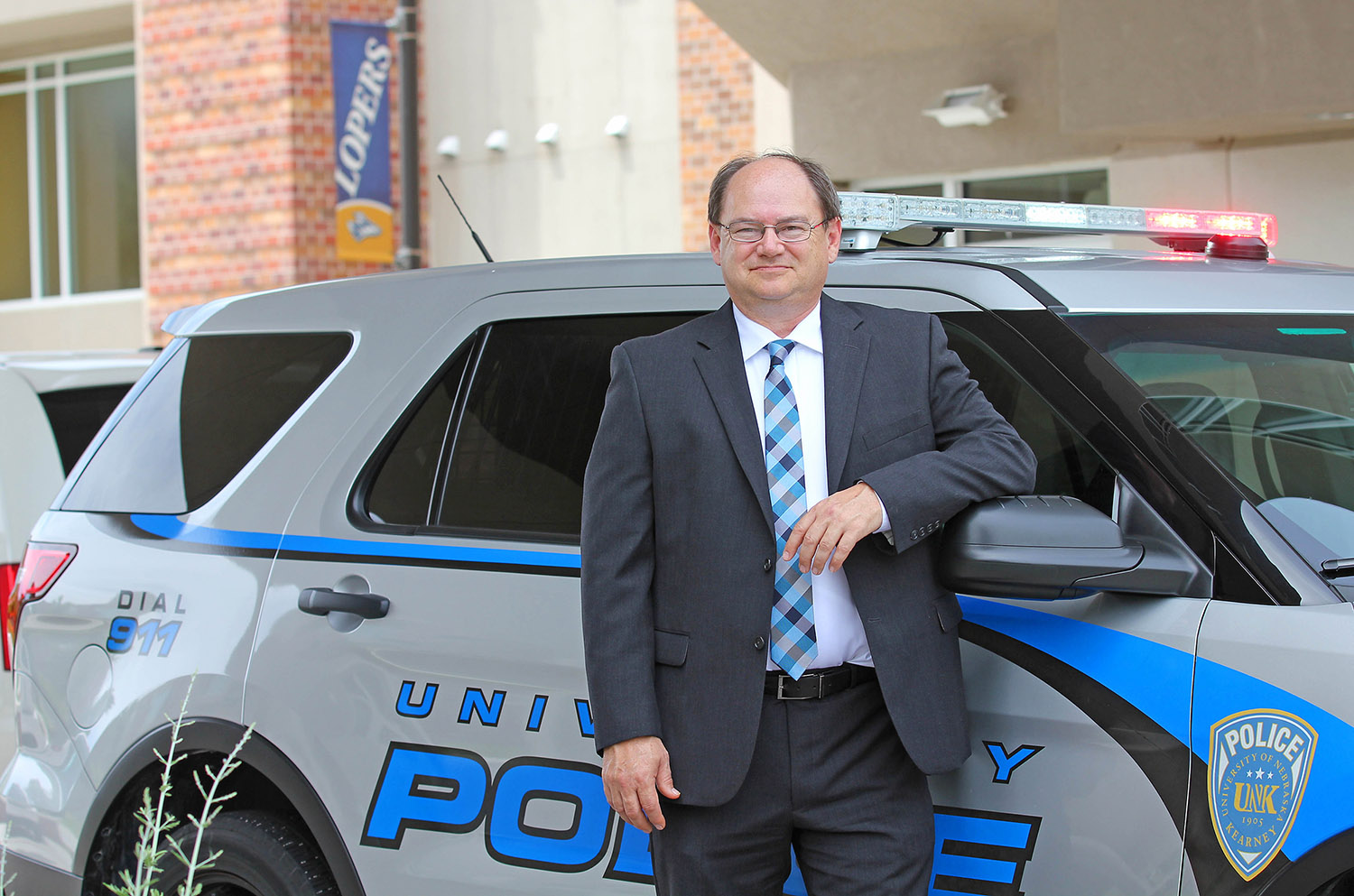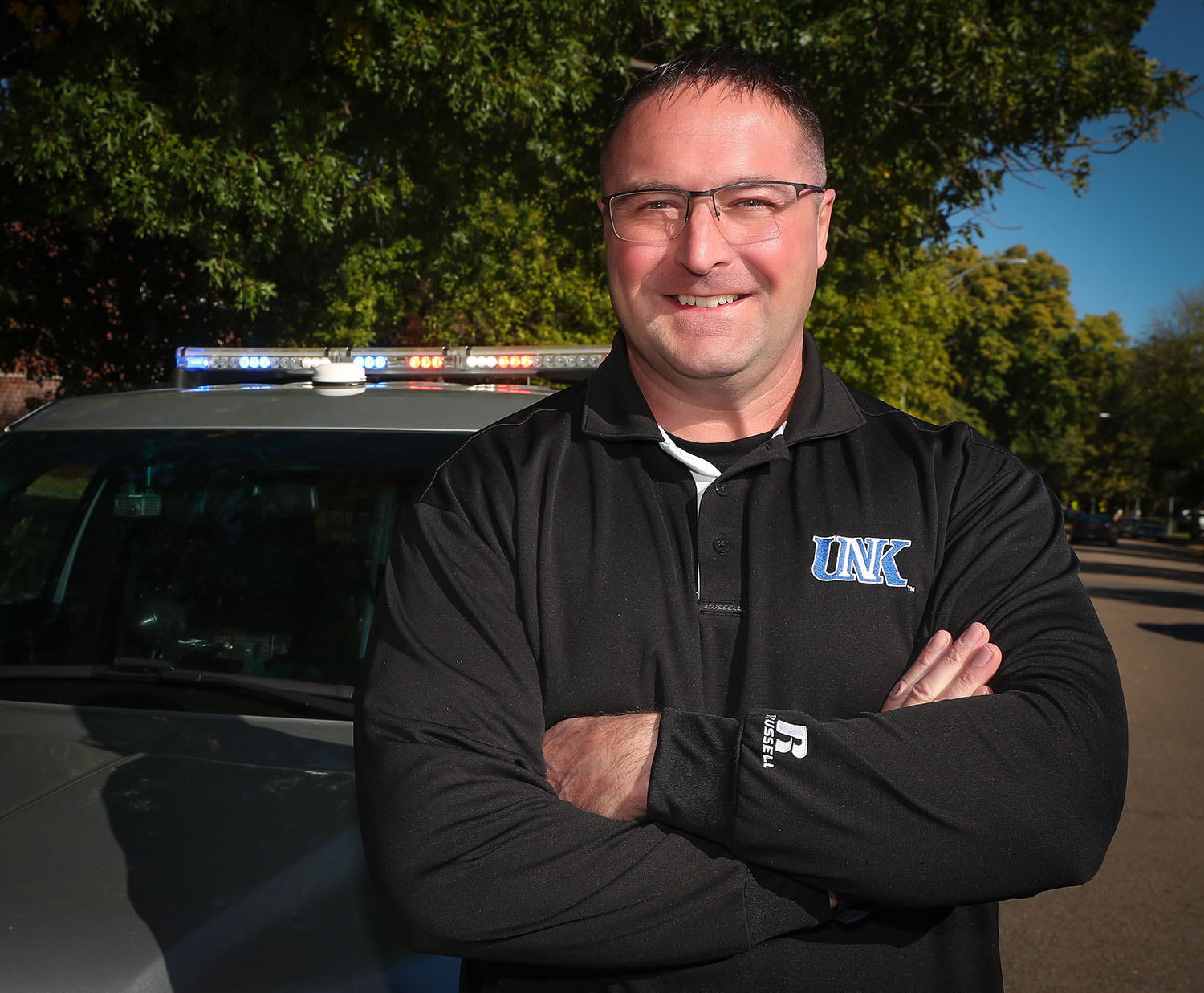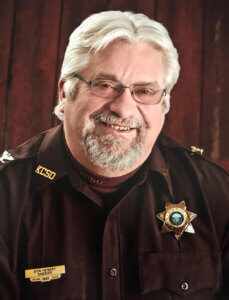
By TYLER ELLYSON
UNK Communications
KEARNEY – Kyle Harshbarger and Jim Davis recognize the value of continuing education for law enforcement officers.
Harshbarger received countless hours of advanced training during his 24-year career with Kearney Police Department, allowing him to serve as a SWAT team commander and head of criminal investigations before joining the University of Nebraska at Kearney faculty in 2018.
Davis, UNK’s police chief since June 2015, has 37 years of law enforcement experience, including time with three different sheriff’s departments and the University of Nebraska-Lincoln Police Department, where he was a training officer and criminal investigator. He works with both the Nebraska and South Dakota law enforcement training centers to instruct new recruits in areas such as search and seizure, suspect control, traffic stops, tactical communications, investigations and interrogation.
“We were both very fortunate that the agencies we worked for trained us very well,” said Harshbarger, a full-time lecturer in UNK’s Department of Criminal Justice.
But, he added, “The smaller agencies don’t always get those opportunities.”
Harshbarger and Davis believe every law enforcement officer should have access to the training and education needed to effectively serve their communities, and they’re using their roles at UNK to help make this happen.
The duo launched an initiative earlier this year that offers continuing education at little to no cost for any Nebraska law enforcement agency. Their focus is on smaller departments, especially those in rural parts of the state, that lack the resources or funding to provide this training.
“We want to give them the training they need while also promoting everything the university has to offer,” Davis said. “Our payback is when they decide to sign up for other classes or they send their child here to the university.”
So far, the training program has reached about 40 different agencies across the state, with sessions offered on campus or at a remote site. Agencies can also participate via Zoom.
“Geographically, we look at this as an opportunity for agencies that are located outside larger metropolitan areas,” Harshbarger said.

Nebraska law enforcement officers are required to complete at least 20 hours of continuing education each year to maintain certification. This includes two hours of anti-bias and implicit bias training, a requirement the Nebraska Legislature added in July to combat apparent or actual racial profiling.
That training has been a major focus of the UNK program.
“If you have a brain, you have some type of bias,” said Davis, who works with officers to identify these biases and prevent them from impacting their on-the-job actions.
Last week, the UNK Police chief made the nearly 200-mile drive to Center – a tiny town in northeast Nebraska – to lead a free training session on the topic. More than a dozen law enforcement officers from four different agencies were in attendance.

“For smaller departments like mine, that are that far away from Grand Island, being able to get somebody like Jim to come up here and train us is really fantastic,” said Knox County Sheriff Don Henery, who organized the session conducted in the courthouse basement.
Henery oversees eight sworn officers and a tight budget. By avoiding a six-hour round trip to the Nebraska Law Enforcement Training Center in Grand Island, he saves both time and money.
“While those officers are gone, you have to pay somebody to work. You have to pay them on the road. You can see the costs climb,” said Henery, who gave Davis an “A++” on his presentation.
“He did a whale of a job,” the sheriff said. “I really appreciate it.”
In addition to anti-bias training, Harshbarger and Davis also offer classes in numerous other areas, including criminal investigation, search and seizure, mental health, de-escalation and report writing. Training sessions are tailored to meet agencies’ wants and needs. As the program evolves, they hope to bring in outside experts who can lead sessions on specific topics.
They also plan to expand the initiative into neighboring states, such as Colorado, Kansas, South Dakota and Wyoming, and there’s an opportunity to provide training at College Park at Grand Island, potentially through a partnership with the Nebraska Law Enforcement Training Center. UNK reestablished its presence at College Park in September and the university will begin its first slate of courses there, including two upper-level criminal justice classes, on Jan. 25.
Eventually, Harshbarger and Davis want to create a set schedule for training dates and locations, allowing agencies to sign up for the sessions they’re interested in.
“This is our way of giving back to the law enforcement community,” Harshbarger said. “I think it’s important that we do that as a university, that we give back to those who got us to where we’re at.”